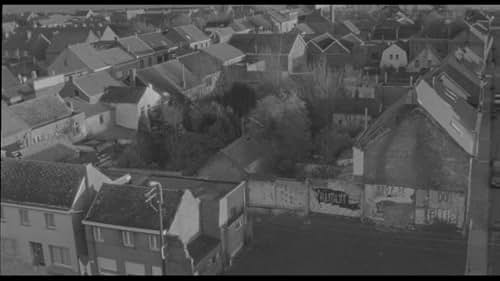This is about a village nominated to completely disappear, hence not easy for the people living there. We meet several of them, and see how they cope with the many changes around them. They (and we) witness the demolition of houses that already existed before they were born. As can be expected, an overload of nearly forgotten memories pass by.
A typical example is a particular house that we see broken down, its front door lifted and thrown on a large pile of trash. Known fact is that this front door was hand made by the wife of the original owner, and contained 250 copper screws. Such details are irrelevant for us, of course, but it makes perfectly clear how important these memories were for the villagers, up to and including all the petty details.
Kitchen tables, by virtue of the people gathering around these, play a central role in this film. We don't see the director and the camera's being on one side of the table, but from that position we are able to witness all dialogues and personal opinions of the locals. We also see the delivery attempts of registered letters, announcing the forced exodus of all inhabitants (we know that refusal to accept these letters won't alter facts, but that's easy for us to say). We also see Emilienne return from a meeting with the mayor, who has stated that she can stay for at least another 5 years, contrary to all decisions taken on higher political levels.
This film was screened as part of the Berlinale 2011, followed by a Q&A with the Dutch director. He told how the idea originated from a newspaper article covering the demolition of this Belgian village. Being myself from The Netherlands and knowing our extensive collection of jokes about the adjacent country Belgium and its inhabitants, getting started was undoubtedly a task in itself. Some mistrust could be expected. He contacted the village priest first, who was then already known to be deadly ill. Nevertheless, we see him still celebrating masses and active in other parish duties, and we also witness his medical consultations. From there the film maker got new contacts, eventually meeting main character Emilienne who proves to be the perfect person for a central role.
All in all, an interesting insight in the mindset of these villagers, and the distance between high-level political decisions and how it effectively works out for individuals. That the whole film is in black&white did not hinder me, though some may think otherwise. It was a 77 minutes well spent. I may be prejudiced having my roots in a small village that was also torn apart by high-level politics. Most of the houses are still there, but two highways and an expanding airport have left several scars on the village plan, thereby separating people that were neighbors previously.


